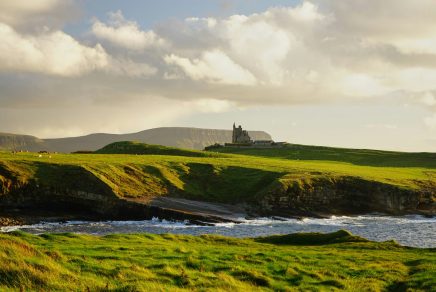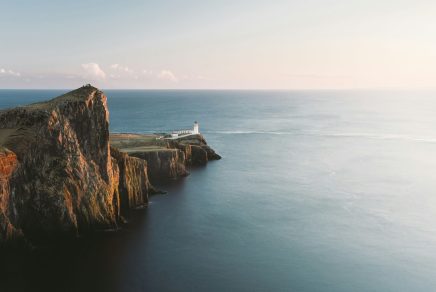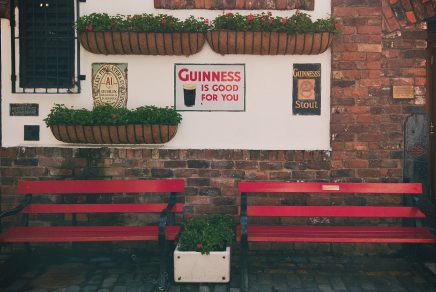Share the article
Raise your hand if you, too, have imagined bearded little green men clutching a pot of gold at the sight of a rainbow! From Scotland tales to Ireland legends, folklore originating from Gaelic traditions have been entertaining both tourists and locals for several centuries now. Even though naysayers are keen to assign such stories to a hyperactive imagination and the omnipresence of Scotch whisky rather than to actual occurrences…
Each of the two verdant realms are marked by their own set of respective legends. They also possess a remarkable ensemble of storytellers! Their talents have been passed down from one generation to the next. Whatever your next stop, you, too, will find yourself captivated by these mythical characters.
In both Ireland and Scotland, these vivid stories will, undoubtedly, enrich your trip and leave you with indelible memories. That is, of course, if Nessie lets you leave in one piece!
Here are four famous folk tales hailing from various parts of Ireland and Scotland.
The Loch Ness Monster, Scotland
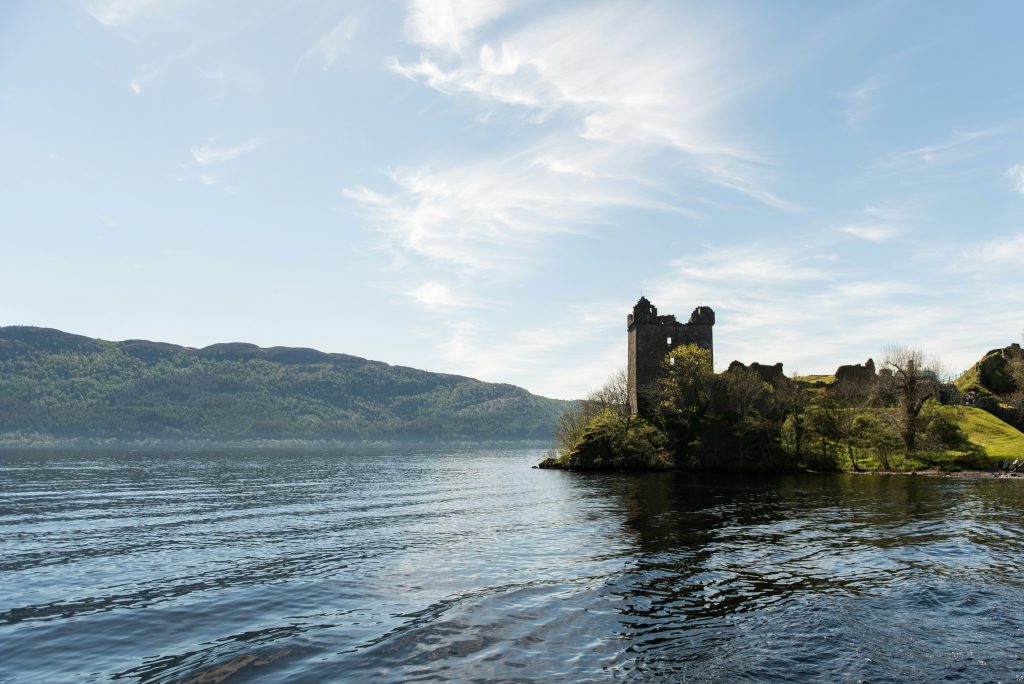
Did you know that more people have been on the moon than at the bottom of Loch Ness? The fabled lake, nestled in the Highlands, is the largest in the British Isles. At 230 metres deep and concealing a 271-metre-deep crevice… this makes for an excellent hideaway for Nessie. That’s the mysterious creature that several boaters have sworn to have seen with their own eyes.
Part dinosaur, part serpent, Nessie has been part of Scottish folklore since the Roman era. Back then, the Picts, a group established in the Highlands and fascinated by the animal kingdom, engraved this enigmatic underwater beast on several stones. It wasn’t until the Middle Ages that Saint Columba, during a mission to evangelize the Celts, saw Nessie emerge from the dark depths of Loch Ness to devour a local farmer. The missionary called on the power of God, who made the creature retreat once and for all.
Well, almost. The major roadworks of the 1930s once again stirred Nessie! He appeared more and more frequently, making the front page of a dozen newspapers. It has been sighted several times since but, as luck would have it, never quite long enough to be photographed.
The Giant’s Causeway, Northern Ireland
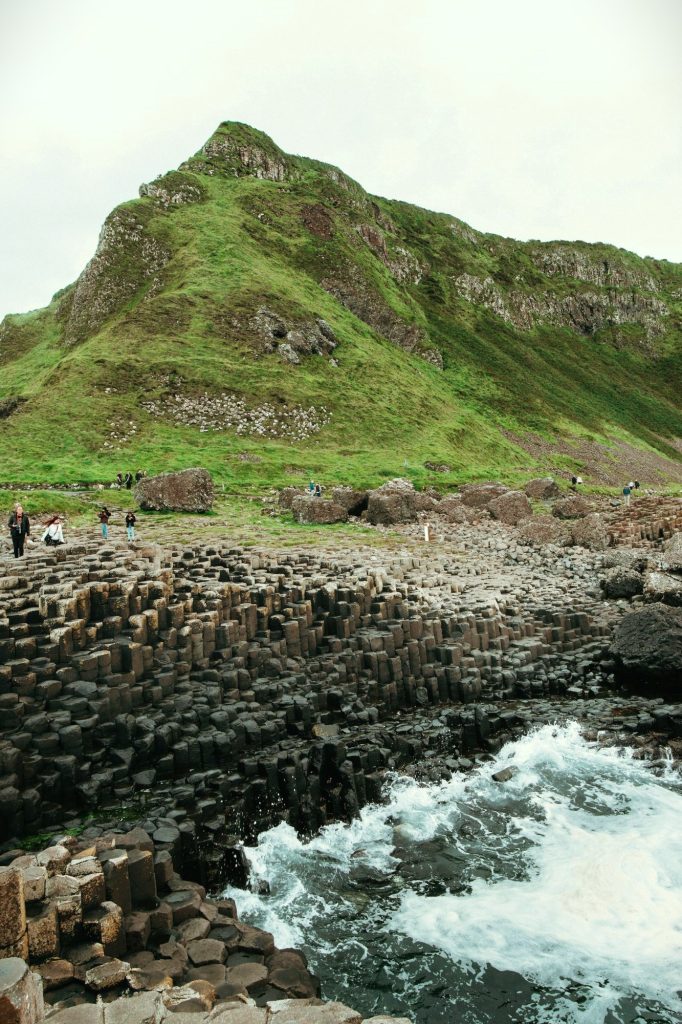
The theory of erosion and volcanic activity isn’t valid in these parts. The iconic Giant’s Causeway, in Northern Ireland, is famous around the world. Why? Because of its 40,000 interlocked hexagonal basalt columns trespassing onto the sea, at the edge of the Antrim plateau. But that has absolutely nothing to do with science.
At least that’s according to legend! It says that two giants by the name of Finn McCool of Ireland and Benandonner of Scotland are responsible for this geological anomaly. Both colossuses took pleasure in insulting and toying with each other. That is until the Irishman, exceptionally offended, challenged the Scot to a duel.
The sea that separated them was treacherous and impracticable, but McCool was determined. He quickly built a causeway connecting Ireland to Scotland. He restlessly threw massive stones into the water until he caught a glimpse of his enemy’s silhouette… Which, even in the distance, was a lot more imposing than his own.
Unnerved and frightened, McCool ran home to his wife. She cleverly suggested he deceive Benandonner by dressing up as a baby. The Scottish giant slammed the door open shortly after but stopped dead in his tracks. He was terrified by the mere thought of duelling the father of what could only be qualified as an immense baby! He ran straight back to Scotland, hastily destroying the causeway along the way. That way, he ensured the abominable Irish giant would never find him.
River Sligachan, Scotland
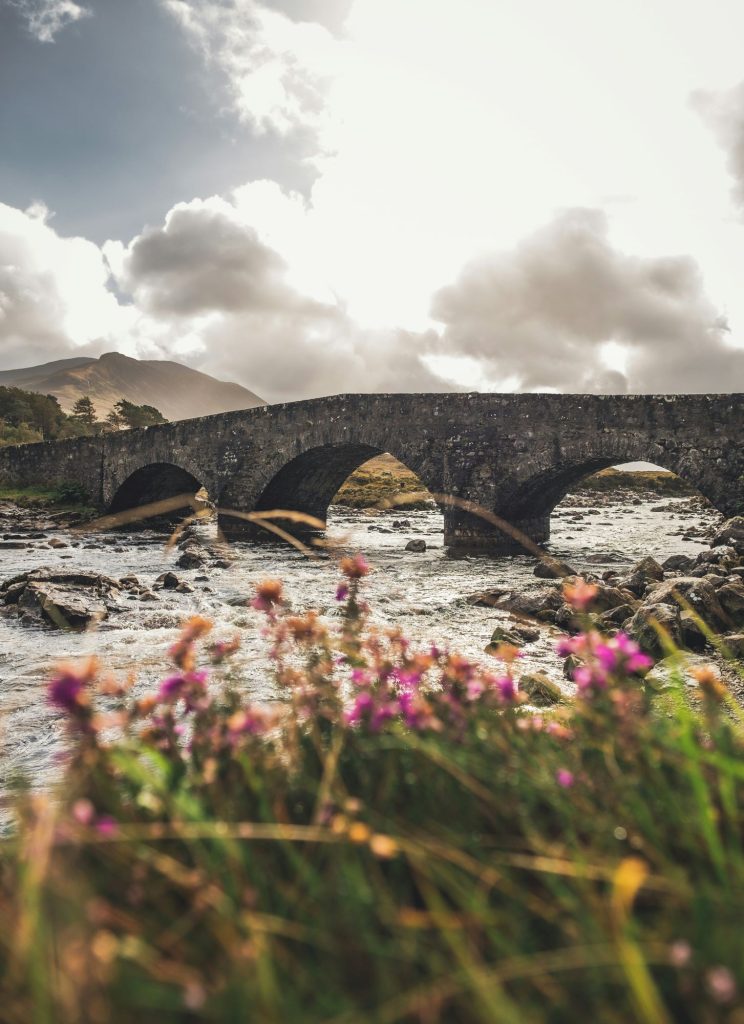
Once upon a time, two opposing Scottish clans grew tired of fighting each other. They decided to bury the hatchet for eternity by uniting the most handsome man of one clan with the most beautiful woman of the other in holy matrimony.
On the fateful day of the ceremony, the bride and her humble servant hopped on a horse toward the Isle of Skye, excited to meet the groom for the first time. Alas, tragedy struck. With just a few minutes left in the journey, the horse crumbled to the ground. The bride, glorified throughout Scotland for her unmatched beauty, landed headfirst on the stone bridge.
Disfigured and panicked at the thought of disappointing her clan’s chief, she veiled her bloody face in the hope that the groom wouldn’t see past it. The plan failed. Furious, he violently hurled the bride, her servant and the horse off the Sligachan Bridge. He left them to what he believed would be certain death. They howled in pain but were completely isolated, nobody coming to their rescue… Nobody, except fairies.
Heeding their cries for help, the fairies encouraged the trio to immerse their faces in River Sligachan for seven full seconds. They sang the praises of the rejuvenating powers of the waters of the Isle of Skye. Although skeptical, the woman, her servant and their horse dutifully obeyed. They were all too aware that they didn’t have the luxury of being picky. Much to their surprise, they were completely healed. It wasn‘t until this precise moment that the woman and her servant realized how deeply they loved and cared for each other. Climbing back on their loyal horse, they galloped off and lived happily ever after.
The river and the stone bridge are still among the most famous attractions on the Isle of Skye. Local guides enthusiastically tell this tale. And they aren’t shy about testing the mysterious powers of the glacial waters for themselves, even encouraging the bravest visitors to do the same. Why the bravest? Dunking one’s face in the water does require a certain amount of agility to avoid an impromptu fully clothed swim.
Leprechauns, Ireland
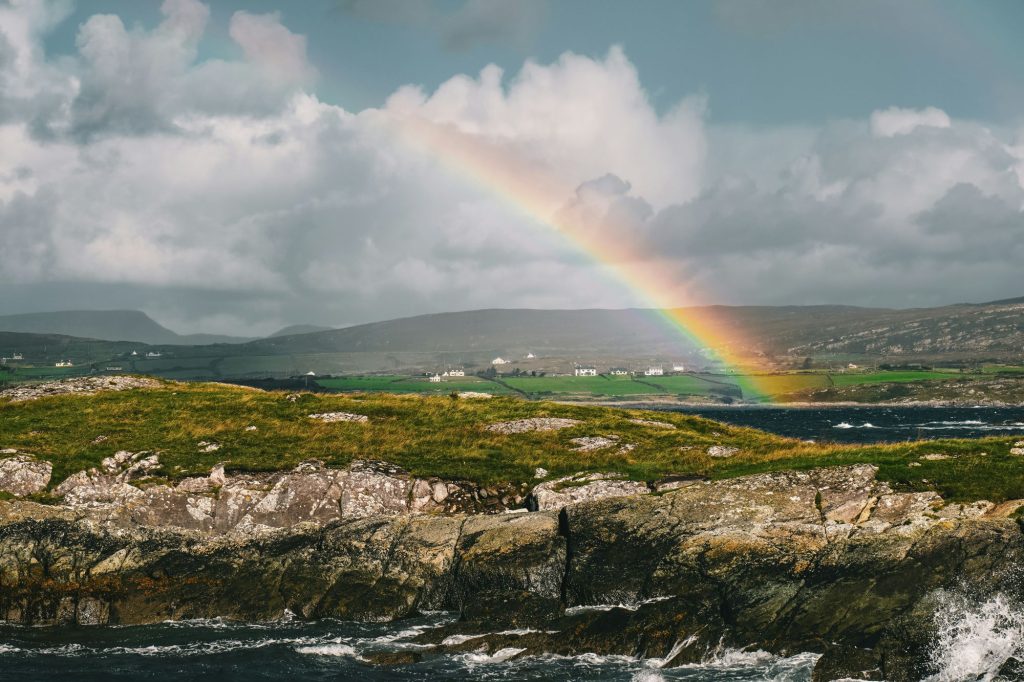
Mischievous, covetous, petulant, practical joke enthusiasts. Leprechauns, despite their cheerful appearance, have a surprisingly bad reputation. Legend has it that leprechauns are the result of the union between humans and maleficent spirits. However, they do not share enough similarities with either to be identified as such. They, therefore, are bound to live solitarily in a parallel universe.
The chubby wee men are typically seen sporting tall green hats and long reddish beards. They enjoy springing out of bushes and smoking their dudeen, a short-stemmed clay pipe that releases foul yet mysterious odors. Leprechauns are also quite wary of humans and won’t think twice about plying them with homemade whisky, knowing all too well they can’t hold that strong of a liquor. That’s precisely when they strike and steal all the coins they can find, which they hurriedly put out of sight in the famous pots of gold at both ends of rainbows.
Whatever happens, though, do not let the wee folk out of your sight, for they will be gone faster than you can say leprechaun, no matter how firmly you have them in your grasp. And if you do catch one, only then will you get to request three wishes in exchange for his freedom, which he may or may not grant you, depending on his mood….
